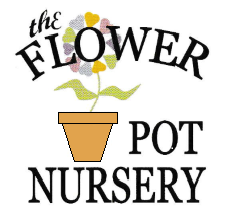Introducing Salvia officinalis 'Berggarten,' a premium herb that brings both culinary excellence and garden elegance to your home! This exceptional variety of sage is renowned for its broad, velvety leaves that are packed with rich, savory flavor, perfect for elevating your favorite recipes. 'Berggarten' stands out with its dense, compact growth habit, making it ideal for herb gardens, borders, and containers. Thriving in full sun and well-drained soil, this hardy perennial is easy to care for, making it a great choice for gardeners of all levels. In addition to its culinary appeal, 'Berggarten' features striking silvery-green foliage that adds a touch of sophistication to any garden setting. Though it rarely flowers, its robust and ornamental foliage more than makes up for it, providing year-round interest. Enhance your culinary creations and beautify your garden with Salvia officinalis 'Berggarten,' a versatile and attractive herb that's sure to impress both in the kitchen and the garden.
Salvia officinalis, the common sage or sage, is a perennial, evergreen subshrub, with woody stems, grayish leaves, and blue to purplish flowers. It is a member of the mint family Lamiaceae and native to the Mediterranean region, though it has been naturalized in many places throughout the world. It has a long history of medicinal and culinary use, and in modern times it has been used as an ornamental garden plant. The common name "sage" is also used for closely related species and cultivars.
Salvia officinalis has numerous common names. Some of the best-known are sage, common sage, garden sage, golden sage, kitchen sage, true sage, culinary sage, Dalmatian sage, and broadleaf sage. Cultivated forms include purple sage and red sage. The specific epithet officinalis refers to plants with a well-established medicinal or culinary value.
Salvia officinalis was described by Carl Linnaeus in 1753. It has been grown for centuries in the Old World for its food and healing properties, and was often described in old herbals for the many miraculous properties attributed to it. The binary name, officinalis, refers to the plant's medicinal use-the officina was the traditional storeroom of a monastery where herbs and medicines were stored. S. officinalis has been classified under many other scientific names over the years, including six different names since 1940 alone. It is the type species for the genus Salvia.
Cultivars are quite variable in size, leaf and flower color, and foliage pattern, with many variegated leaf types. The Old World type grows to approximately 60 cm (2 ft) tall and wide, with lavender flowers most common, though they can also be white, pink, or purple. The plant flowers in late spring or summer. The leaves are oblong, ranging in size up to 65 mm (2+1⁄2 in) long by 25 mm (1 in) wide. Leaves are grey-green, rugose on the upper side, and nearly white underneath due to the many short soft hairs. Modern cultivars include leaves with purple, rose, cream, and yellow in many variegated combinations. The common sage gives its name to the grayish-green color sage, due to the distinctive color of its leaves.
Give credit where credit is due: Wikipedia 2024
FlowerPotNursery Berggarten Sage BroadLeaf Salvia officinalis Berggarten 4” Pot
The Flower Pot Nursery
$9.58
- SKU:
- BLSO040724










